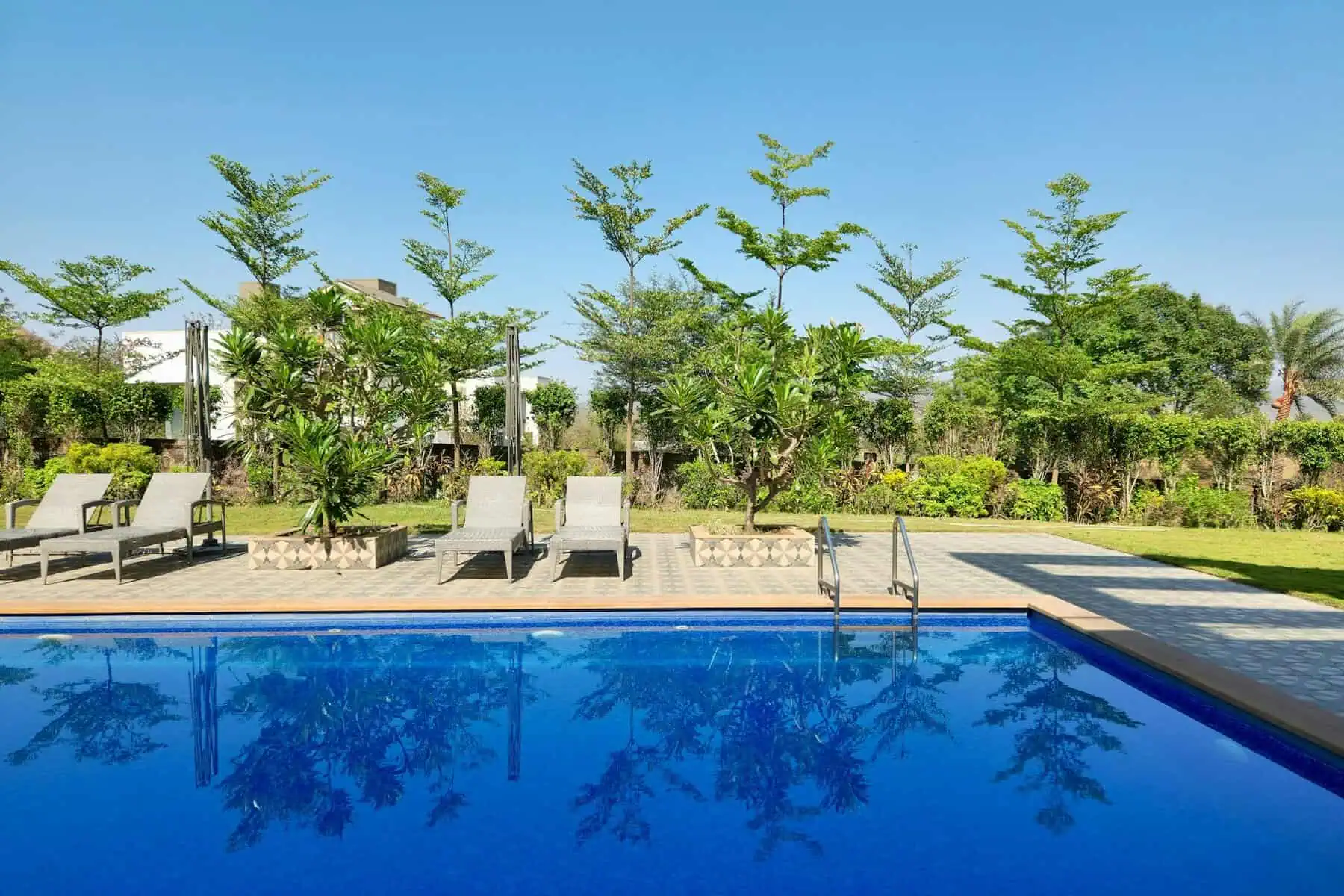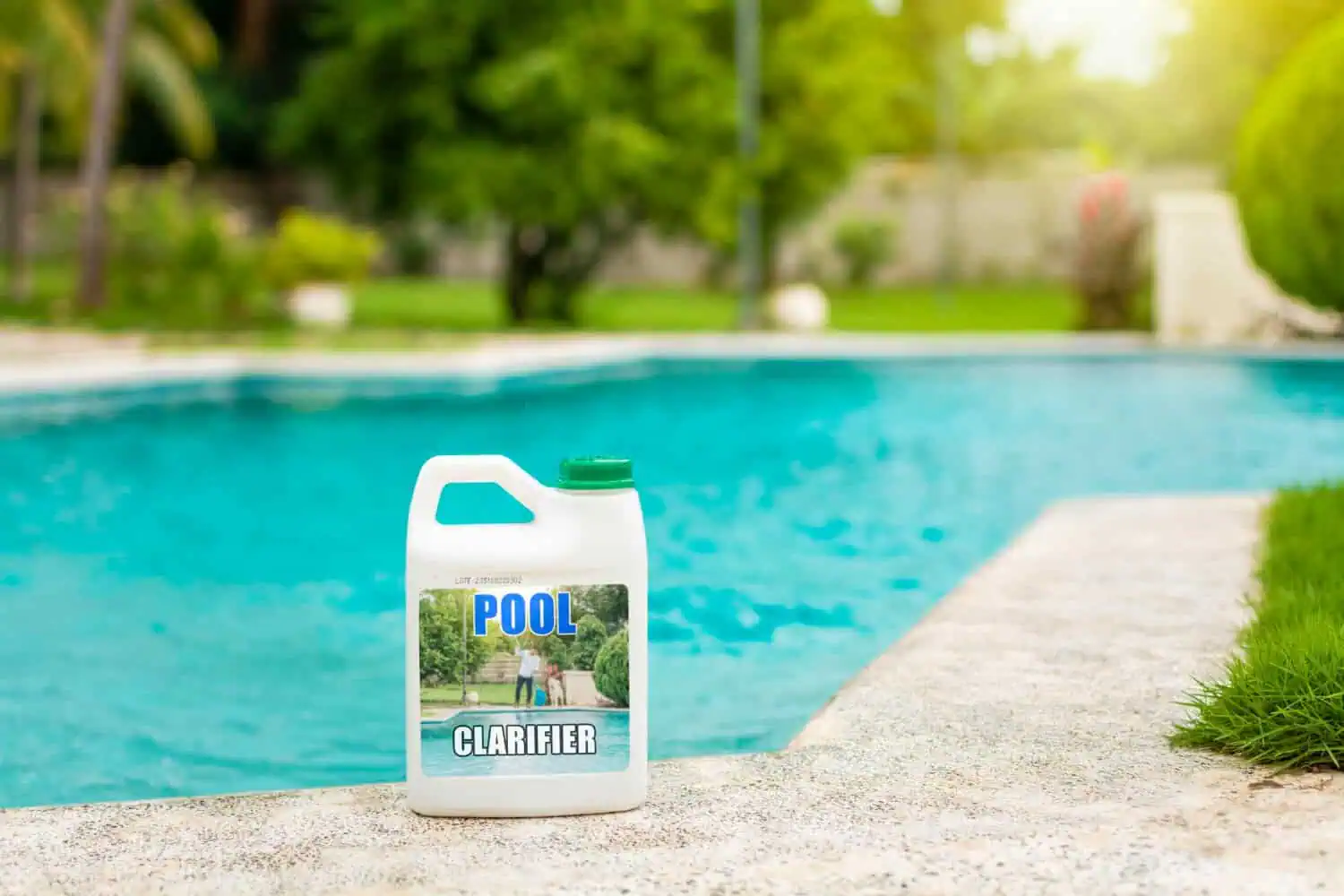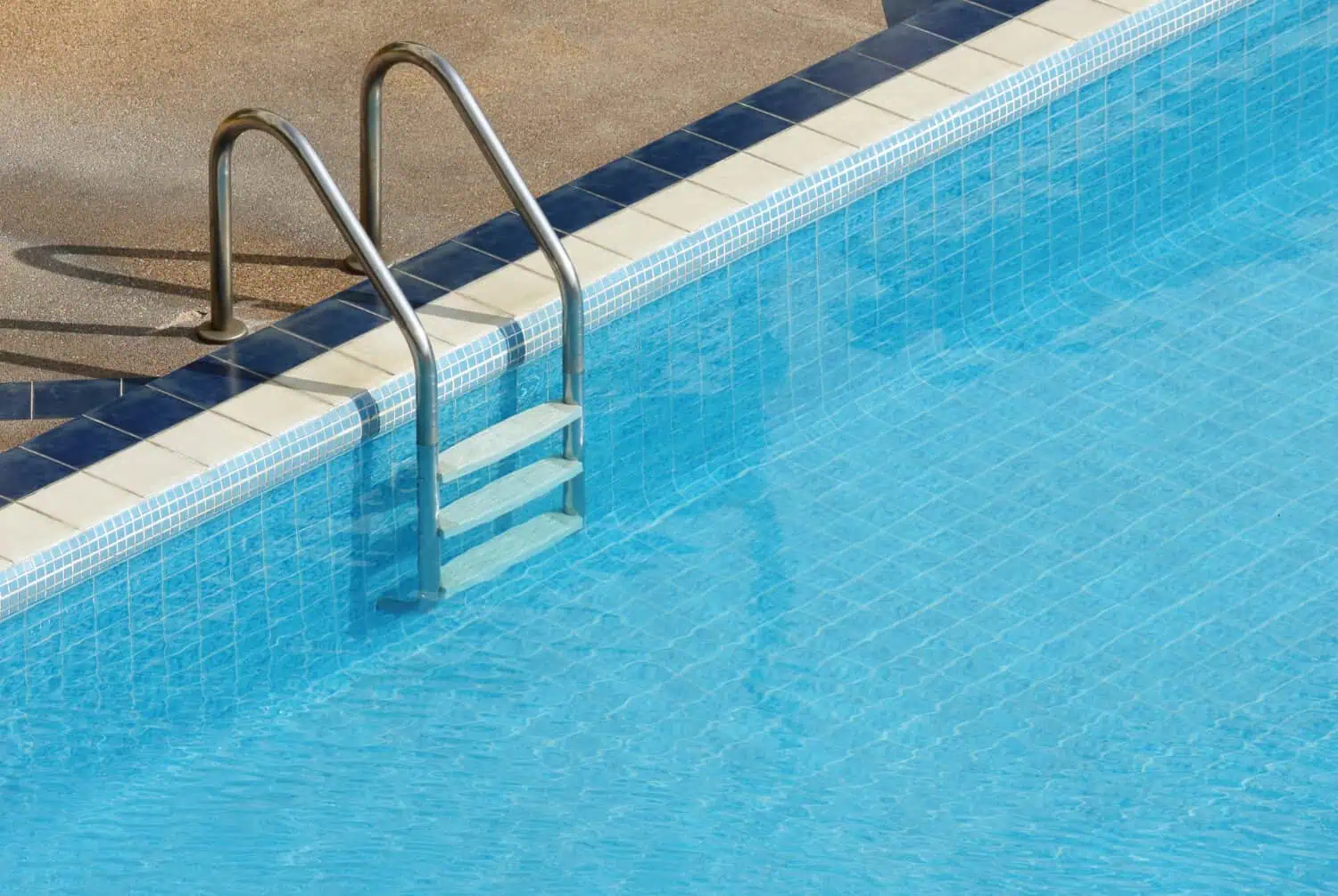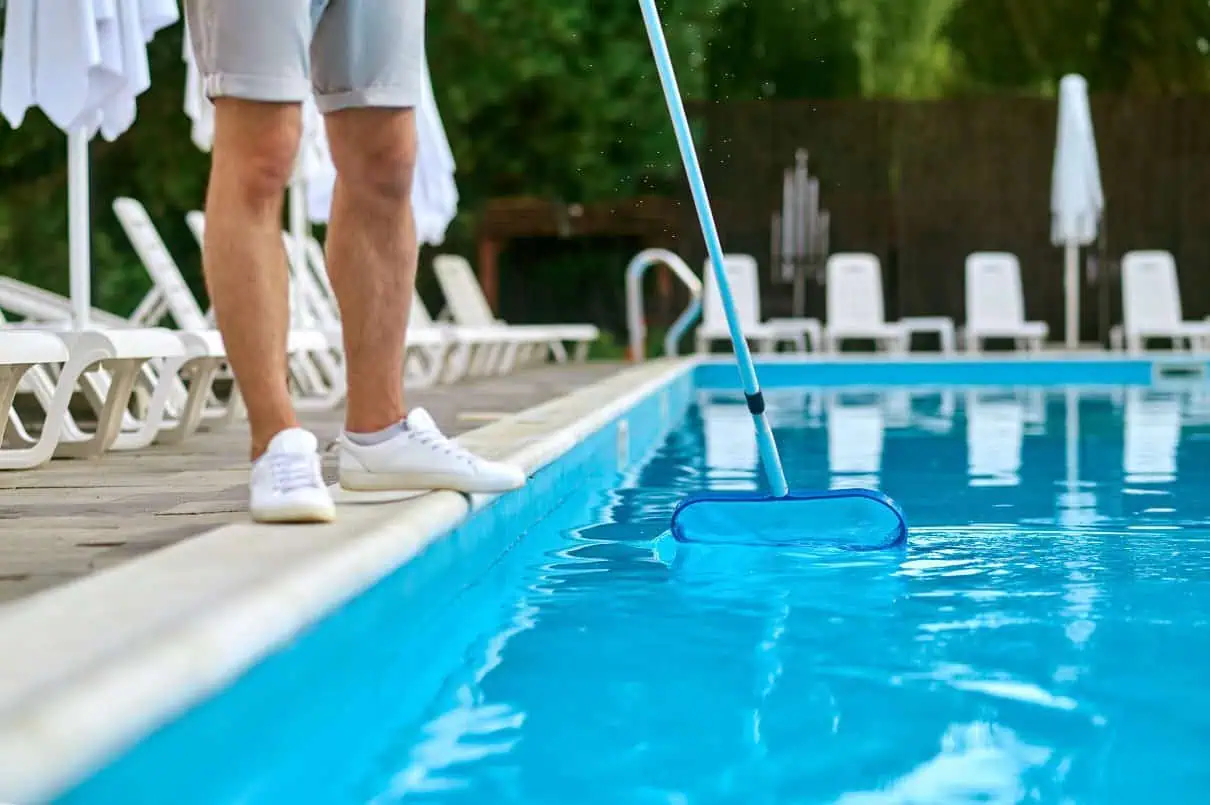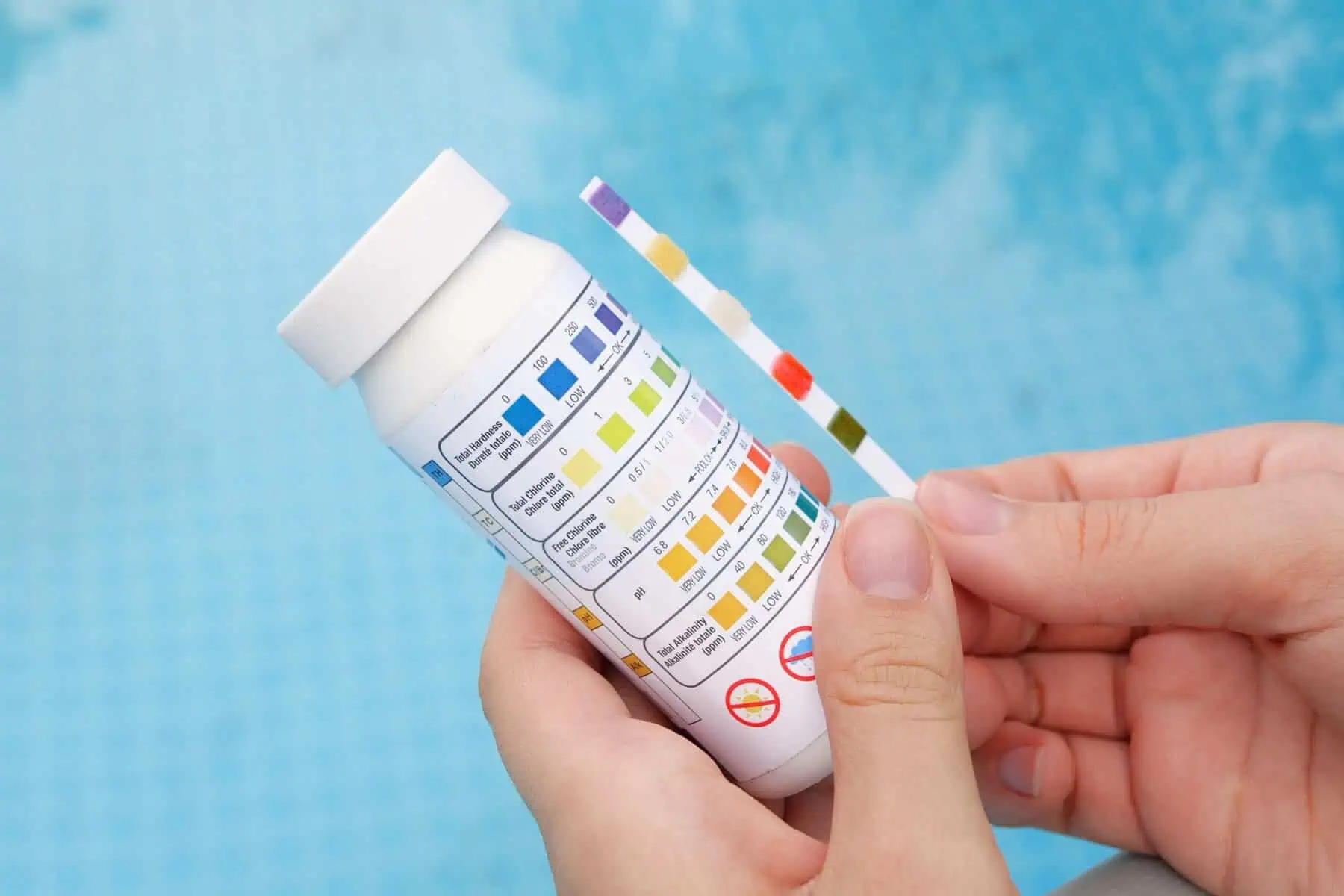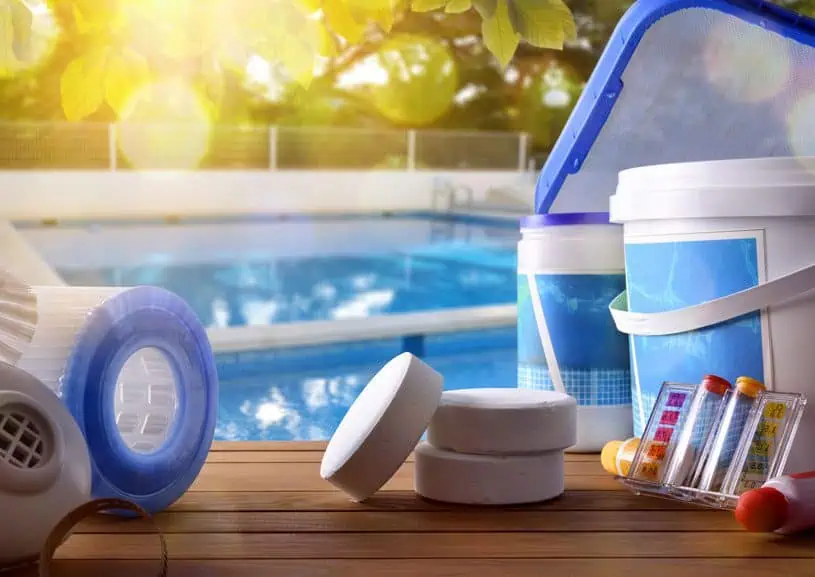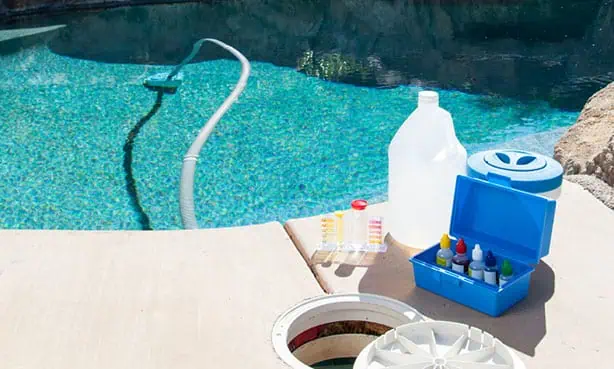Keeping your pool clean and safe requires using the right pool chemicals. Without the right balance of chemicals, your pool water could become dirty, unsafe, and even damage your pool equipment. Understanding which chemicals to use and why they are important is key to maintaining a perfect swimming environment.
Every pool owner needs to know the basics of pool chemistry. This knowledge helps you keep the water clear and free from harmful bacteria. It’s not just about adding chlorine; you need to understand how different chemicals work together to keep the pool water balanced.
In this guide, we’ll explore how to pick the right pool chemicals. We’ll start with the basics of pool chemistry, go over the essential chemicals every pool needs, and explain how to test and balance your pool water. Finally, we’ll look at common mistakes people make and how to avoid them. By the end, you’ll be ready to keep your pool sparkling clean and safe for everyone to enjoy.
Understanding the Basics of Pool Chemistry
Understanding the basics of pool chemistry is the first step in keeping your pool clean and safe. Pool chemistry involves maintaining the right balance of chemicals to ensure the water stays clear and free from harmful bacteria.
The most important elements of pool water are pH levels, alkalinity, and sanitizer levels. The pH level measures how acidic or basic the water is. You want to keep the pH between 7.2 and 7.6 to ensure the water is comfortable for swimmers and to protect pool equipment. Alkalinity acts as a buffer for pH levels. It helps control pH fluctuations, making the water less likely to become too acidic or too basic. Keeping alkalinity levels between 80 and 120 ppm (parts per million) is ideal.
Sanitizers, like chlorine or bromine, are essential for killing bacteria and other harmful organisms. Chlorine is the most common sanitizer and should be maintained at 1-3 ppm. Too much or too little sanitizer can lead to problems. If the sanitizer level is too low, harmful bacteria can thrive. If it’s too high, it can cause skin and eye irritation.
By understanding these basics, you can keep your pool water balanced and safe for everyone to enjoy. Regular testing and adjustments will help maintain the ideal chemical levels.
Essential Pool Chemicals You Need
Every pool owner needs certain chemicals to keep the water clean and balanced. Here are the essential chemicals you should have on hand.
1. Chlorine: Chlorine tablets, granules, or liquid are used to sanitize the water and kill bacteria. It is vital to maintain a chlorine level of 1-3 ppm.
2. pH Increaser and Decreaser: These chemicals help adjust the pH level. If the pH is too low (acidic), you’ll need a pH increaser. If it’s too high (basic), a pH decreaser is necessary.
3. Alkalinity Increaser: This chemical helps to adjust the total alkalinity of your pool water. Keeping alkalinity in check helps maintain stable pH levels.
4. Calcium Hardness Increaser: Calcium hardness measures the amount of calcium in the water. Low calcium levels can damage pool surfaces and equipment. Use a calcium hardness increaser to maintain levels between 200-400 ppm.
5. Cyanuric Acid: This chemical helps protect chlorine from being broken down by sunlight. Keeping a level of 30-50 ppm is ideal.
6. Shock Treatment: Pool shock is a more concentrated form of chlorine. Use it to quickly raise chlorine levels and kill any lingering bacteria or algae, especially after heavy use or a rainstorm.
Each of these chemicals plays a crucial role in maintaining a clean and balanced pool. Always keep them on hand and regularly check your pool’s chemical levels to make proper adjustments. With the right chemicals, your pool will remain a safe and enjoyable place to swim.
How to Test and Balance Pool Water
Testing and balancing your pool water is crucial for maintaining a healthy swimming environment. Here’s how you can do it effectively.
1. Test the Water Regularly: Use a pool test kit or test strips to check your pool water. These tests will measure pH levels, chlorine levels, alkalinity, and more. Ideally, test your pool water at least once a week.
2. Adjust pH Levels: If the pH levels are off, use a pH increaser or decreaser. Remember, the ideal pH range is between 7.2 and 7.6. Keeping the pH balanced helps to keep swimmers comfortable and protects pool equipment from damage.
3. Maintain Chlorine Levels: Ensure the chlorine level is between 1-3 ppm. If the chlorine is too low, add chlorine tablets or liquid. If it’s too high, you might need to dilute your pool water by adding more fresh water.
4. Balance Alkalinity: Use an alkalinity increaser to keep the total alkalinity between 80-120 ppm. Alkalinity helps to stabilize pH levels, so maintaining it is essential.
5. Check Calcium Hardness: Use a calcium hardness increaser if necessary to keep levels between 200-400 ppm. Proper calcium levels prevent damage to pool surfaces and equipment.
6. Shock the Pool as Needed: Use pool shock to quickly raise the chlorine level and kill bacteria. Shocking is particularly useful after heavy use or after a rainstorm.
With these steps, you can keep your pool water balanced and safe for swimming. Regular testing and adjustments will help maintain clean and clear water.
Common Mistakes and How to Avoid Them
Even with the best intentions, it’s easy to make mistakes when it comes to pool maintenance. Here are some common errors and how to avoid them.
1. Skipping Regular Testing: Neglecting to test your pool water can lead to imbalanced chemicals. Set a schedule to test your water at least once a week to stay on top of it.
2. Adding Chemicals Incorrectly: Adding too much or too little of any chemical can cause problems. Always read the instructions carefully and use the proper amounts.
3. Ignoring pH and Alkalinity: Focusing only on chlorine while ignoring pH and alkalinity can lead to skin irritation and equipment damage. Keep all levels balanced.
4. Using Expired Chemicals: Using expired chemicals can be ineffective and even harmful. Check expiration dates and replace old chemicals as needed.
5. Not Shocking the Pool: Skipping regular shocks can allow bacteria and algae to thrive. Make sure to shock your pool periodically, especially after heavy usage or rain.
6. Improper Chemical Storage: Store chemicals in a cool, dry place away from direct sunlight. Improper storage can reduce their effectiveness and may be dangerous.
By avoiding these common mistakes, you can keep your pool in top shape. Proper testing, chemical handling, and storage are key to a healthy pool.
Conclusion
Maintaining a clean and safe pool doesn’t have to be complicated. By understanding the basics of pool chemistry, knowing which essential chemicals to have, and learning how to test and balance your pool water, you can ensure a healthy swimming environment. Avoiding common mistakes is also crucial in keeping your pool well-maintained and enjoyable throughout the season.
Remember, the right pool chemicals and proper maintenance make a significant difference. Regular testing and careful adjustments will keep your pool water clear and safe. Your pool should be a place of fun and relaxation, not a source of stress and confusion.
If you’re ever unsure about which chemicals to use or need expert advice, Cincinnati Pool & Patio is here to help. We offer a wide range of pool chemicals and pool supplies in Cincinnati, Ohio to meet all your needs. Visit us today to get everything you need for the perfect pool season!

